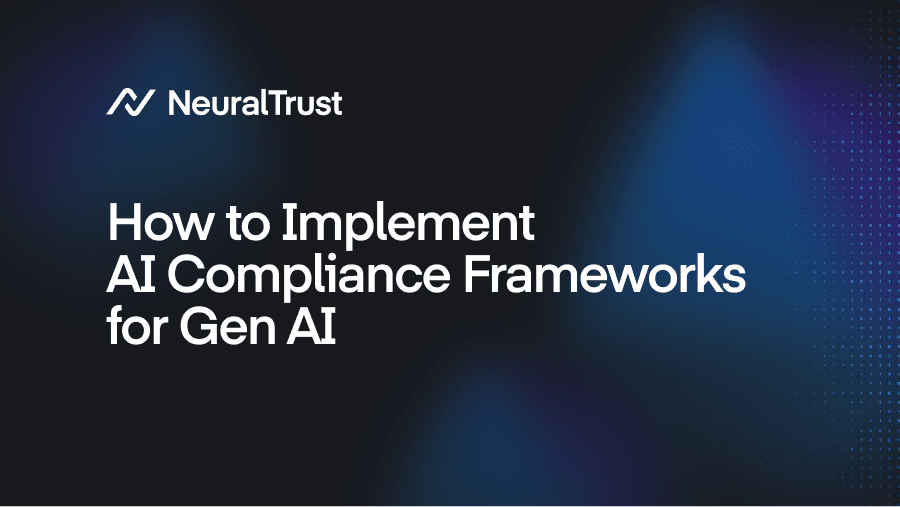Blog
All the posts from our experts on implementing Generative AI securely and effectively
Blog
All the posts from our experts on implementing Generative AI securely and effectively

Alessandro Pignati • December 19, 2025
A Deep Dive into the OWASP Top 10 for Agentic Applications 2026
Read more
Alessandro Pignati • December 11, 2025
Indirect Prompt Injection: The Complete Guide
Read more
Alessandro Pignati • December 1, 2025
5 Predictions for AI Agent Security in 2026
Read more
Martí Jordà • October 24, 2025
OpenAI Atlas Omnibox Prompt Injection: URLs That Become Jailbreaks
Read more
Rodrigo Fernández • October 22, 2025
AI Agent Security: How to Protect Autonomous Systems
Read more
Rodrigo Fernández • October 16, 2025
Self-fixing AI agents: already here?
Read more
Rodrigo Fernández • September 25, 2025
AI-Driven Supply Chain Attacks: The New Cyber Risk in 2025
Read more
Martí Jordà • August 8, 2025
GPT-5 Jailbreak with Echo Chamber and Storytelling
Read more
Joan Vendrell • July 31, 2025
Offensive vs. Defensive AI Security
Read more
Rodrigo Fernández • July 30, 2025
The TSA Airport Cybersecurity Warning
Read more
Alejandro Domingo Salvador • July 28, 2025
The New Cybersecurity Jobs in the Age of AI
Read more
Rodrigo Fernández • July 24, 2025
What the New US AI Law Means for Real Deployments
Read more
NeuralTrust Team • July 18, 2025
6 foundations for scaling trust in AI-Driven communication
Read more
Ahmad Alobaid • July 11, 2025
Grok-4 Jailbreak with Echo Chamber and Crescendo
Read more
Rodrigo Fernández • July 10, 2025
AI Compliance Policy in the US: The 2025 Essential Guide
Read more
Rodrigo Fernández • July 4, 2025
A CISO’s Guide to Generative AI Security in Retail
Read more
Ahmad Alobaid • June 23, 2025
Echo Chamber: A Context-Poisoning Jailbreak That Bypasses LLM Guardrails
Read more
Rodrigo Fernández • June 19, 2025
McKinsey's Agentic AI Vision: the AI Control Plane
Read more
Mar Romero • June 17, 2025
Open-Source LLM Pipeline Security & Fairness Guide
Read more
Rodrigo Fernández • June 10, 2025
How NeuralTrust Helped a Leading Telco Adopt AI Securely
Read more
Eduard Camacho • June 3, 2025
How to Set Up Prompt Injection Detection for Your LLM Stack
Read more
Joan Vendrell • June 3, 2025
Evaluating GenAI risk: a CISO's guide to AI security
Read more
NeuralTrust Team • June 2, 2025
Gen AI Security for Insurance Companies: Risks & Solutions
Read more
Rodrigo Fernández • May 28, 2025
How to implement and deploy AI safely
Read more
Raquel Sospedra • May 26, 2025
A Guide to Generative AI Security in Healthcare
Read more
Martí Jordà • May 26, 2025
How Prompt Injection Works
Read more
Mar Romero • May 23, 2025
GenAI Project Checklist: How to Accept or Reject a Use Case
Read more
NeuralTrust Team • May 20, 2025
GenAI Security for Airlines: How to Protect Aviation from AI Threats
Read more
Ahmad Alobaid • May 14, 2025
Crescendo Attacks: How LLMs Respond to Gradual Prompt Attacks
Read more
NeuralTrust Team • May 13, 2025
Gen AI Security for Banks and Financial Institutions in 2025
Read more
Mar Romero • May 12, 2025
AI Fraud Detection in Finance
Read more
Mar Romero • May 7, 2025
How to Prepare Your Workplace for AI Integration
Read more
Rodrigo Fernández • May 6, 2025
Why Your LLM Applications Need Active Alerting
Read more
Mar Romero • May 5, 2025
Why Manual Testing Is Failing Your LLMs
Read more
Ayoub El Qadi • April 30, 2025
Benchmarking Jailbreak Detection Solutions for LLMs
Read more
Rodrigo Fernández • April 30, 2025
How to Secure Internal AI Assistants and Copilots
Read more
Mar Romero • April 29, 2025
How to Secure External Chatbots
Read more
Rodrigo Fernández • April 23, 2025
Explainability and Transparency: The Key to Trust in AI
Read more
Mar Romero • April 22, 2025
The Intersection of AI and IoT: Securing Connected Devices
Read more
Ayoub El Qadi • April 18, 2025
Readability Analysis for LLMs in English
Read more
Ayoub El Qadi • April 17, 2025
Language Detection: A Comparative Analysis Approaches
Read more
Raquel Sospedra • April 16, 2025
AI in Healthcare: Protecting Patient Data in the Digital Age
Read more
Rodrigo Fernández • April 14, 2025
Navigating AI Ethics: Balancing Innovation and Responsibility
Read more
Mar Romero • April 10, 2025
The Role of AI in Strengthening Supply Chain Security
Read more
Martí Jordà • April 9, 2025
The Risk of AI Hallucinations: How to Protect Your Brand
Read more
Rodrigo Fernández • April 7, 2025
Why Your AI Model Might Be Leaking Sensitive Data
Read more
Mar Romero • April 4, 2025
The Ultimate AI Compliance Checklist for 2025
Read more
Rodrigo Fernández • April 2, 2025
The 10 Most Critical AI Security Risks in 2025
Read more
Mar Romero • March 31, 2025
Chatbots Are Becoming the New Attack Surface for Hackers
Read more
Joan Vendrell • March 26, 2025
Code Injection in LLM Applications
Read more
Ayoub El Qadi • March 19, 2025
Benchmarking Topic Detection: Amazon Bedrock Guardrail vs. OpenAI
Read more
Ayoub El Qadi • March 18, 2025
Implementing Topic Detection with Amazon Bedrock Guardrail
Read more
Ayoub El Qadi • March 17, 2025
Implementing Topic Detection with OpenAI
Read more
Victor García • March 14, 2025
What is Model Context Protocol (MCP)?
Read more
Joan Vendrell • March 12, 2025
What are AI Guardrails?
Read more
Eduard Camacho • February 28, 2025
AI Gateway benchmark: Comparing security and performance
Read more
Joan Vendrell • February 21, 2025
AI Gateways vs. API Gateways: What’s the Difference?
Read more
Martí Jordà • February 19, 2025
Benchmarking LLM Evaluation Models
Read more
Victor García • February 17, 2025
Which firewall best prevents prompt injection attacks?
Read more
Martí Jordà • February 7, 2025
Predictive Threat Intelligence in AI
Read more
Martí Jordà • February 7, 2025
Mastering AI Traffic with LLMOps: Ensuring Scalability and Efficiency
Read more
Joan Vendrell • February 4, 2025
Holistic Threat Detection: Integrating AI-Powered Security
Read more
Raquel Sospedra • January 30, 2025
Compliance and Governance in AI-Powered Threat Detection
Read more
Joan Soler • January 29, 2025
Zero-Trust Security for Generative AI
Read more
Victor García • January 27, 2025
How to Build Strong AI Data Protection Protocols for Gen AI
Read more
Victor García • January 21, 2025
How to Secure Large Language Models from Adversarial Attacks
Read more
Joan Vendrell • January 17, 2025
AI Gateway: Centralized AI Management at Scale
Read more
Ayoub El Qadi • January 17, 2025
Advanced Techniques in AI Red Teaming for LLMs
Read more
Rodrigo Fernández • January 14, 2025
How to Implement AI Compliance Frameworks for Generative AI Systems
Read more
Nerio Villalobos • January 10, 2025
What is Red Teaming in AI?
Read more
Martí Jordà • January 8, 2025
Future-Proofing AI Security: Strategies for LLM Resilience
Read more
Joan Soler • January 6, 2025
Preventing Prompt Injection: Strategies for Safer AI
Read more
Ayoub El Qadi • January 3, 2025
AI Gateway vs. AI Guardrails: Understanding the Key Differences
Read more
Joan Soler • December 27, 2024
Understanding and Preventing AI Model Theft: Strategies for Enterprise
Read more
Martí Jordà • December 10, 2024
The Role of AI Governance in Protecting Generative AI Systems
Read more
Nerio Villalobos • December 7, 2024
Leveraging user behavior analytics for AI chatbots and assistants
Read more
Joan Soler • November 28, 2024
How to Effectively Prevent Hallucinations in Large Language Models
Read more
Rodrigo Fernández • November 22, 2024
Measuring the ROI of Generative AI Applications
Read more